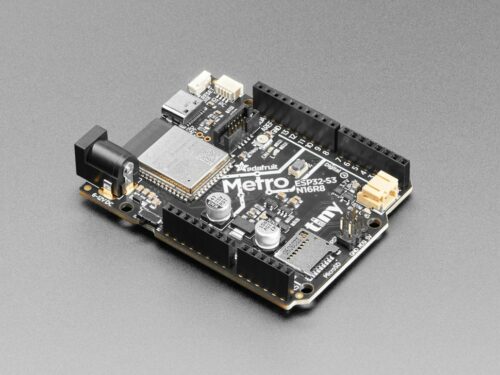A development board with 16MB flash, 8MB PSRAM, native USB and BLE setting new benchmarks for IoT, wearables, and smart home projects.

Adafruit has launched Metro ESP32-S3 with 16 MB flash and an 8 MB Pseudo-Static Random Access Memory (PSRAM) development board. The company claims that with a native Universal Serial Bus (USB) and an abundance of PSRAM, the board is suited for CircuitPython or Arduino, allowing for affordable WiFi integration while maintaining compatibility with shields. The Metro ESP32-S3 consists of a dual-core 240 MHz processor, placing it on par with the dual-core capabilities of the ESP32. While it doesn’t support Bluetooth Classic, it does offer Bluetooth Low Energy (BLE). The ESP32-S3 mini-module embedded in the Metro is coupled with 512KB of Static Random Access Memory (SRAM). The board uses SRAM for quick memory access and PSRAM for spacious but slightly slower access. Furthermore, it is ESP-IDF or Arduino compatible.
The chip significantly outperforms its predecessor, the ESP32-S2! The ESP32-S3 is a state-of-the-art, energy-efficient, 2.4 GHz WiFi/BLE System-on-Chip (SoC) incorporating built-in native USB and other novel features such as Time of Flight distance assessments and Artificial Intelligence (AI) enhancements. Given its superior power and Radio Frequency (RF) capabilities, this SoC is a prime selection for diverse applications like the Internet of Things (IoT), wearable technology, and intelligent home systems.
Some of the key features of the development board include:
- ESP32-S3 Dual Core 240MHz Processor
- FCC/CE certified mini module
- 16 MByte Flash, 8 MByte PSRAM.
- Power: USB-C or Lipoly battery.
- JTAG 2×5 Header for debugging.
- Optional serial debug output pins.
- STEMMA QT connector for I2C
- LEDs: On/Charge/User + status NeoPixel.
- Low Power: ~100uA in deep sleep mode.
- Turn off NeoPixel & I2C Power for the lowest current draw.
- Compatible with ESP-IDF, Arduino, CircuitPython
The microcontroller board is designed for energy efficiency, offering multiple sleep modes. The three primary operating states are normal, light sleep, and deep sleep. In the normal state, users can run code as usual, including tasks like connecting to WiFi or reading sensors. Light sleep acts like a hibernation mode where power consumption is reduced, and while WiFi disconnects, the internal clock and memory remain active, allowing the code to resume where it left off. However, re-initializing disconnected external hardware and WiFi might be necessary. On the other hand, deep sleep provides the utmost power savings but at the cost of losing all memory and state. Only the real-time clock remains functional, which can wake the chip. Upon waking from this mode, the chip restarts from the beginning of the code, ensuring a fresh start each time.





